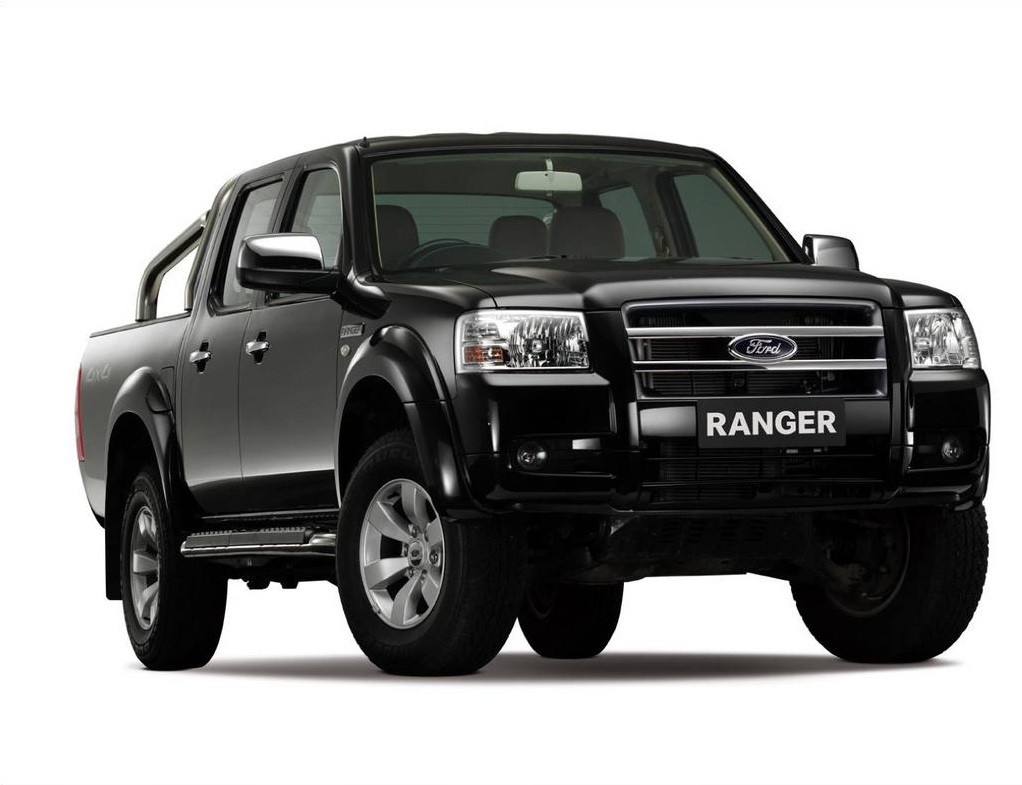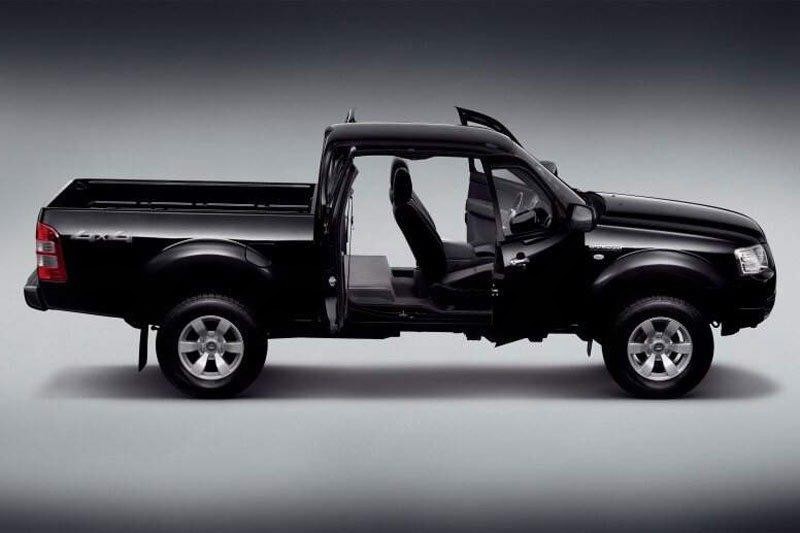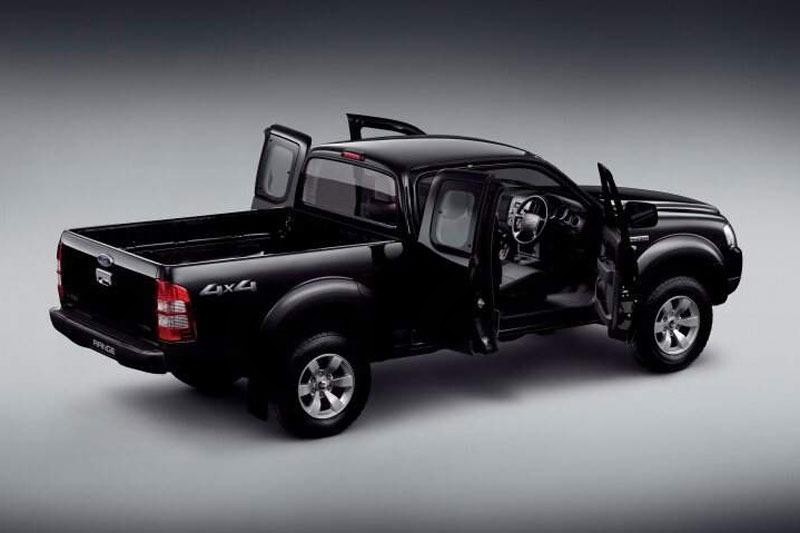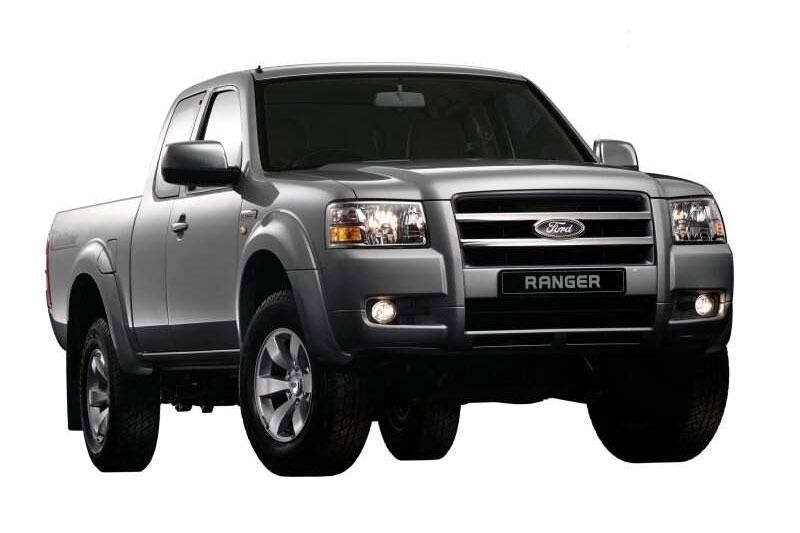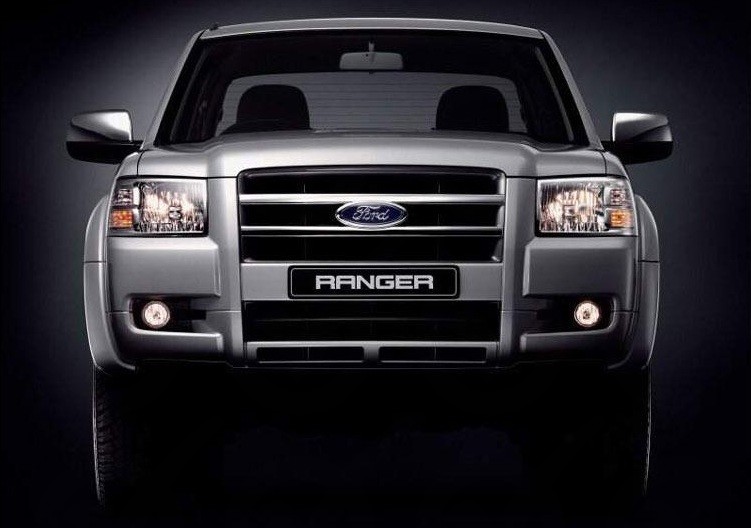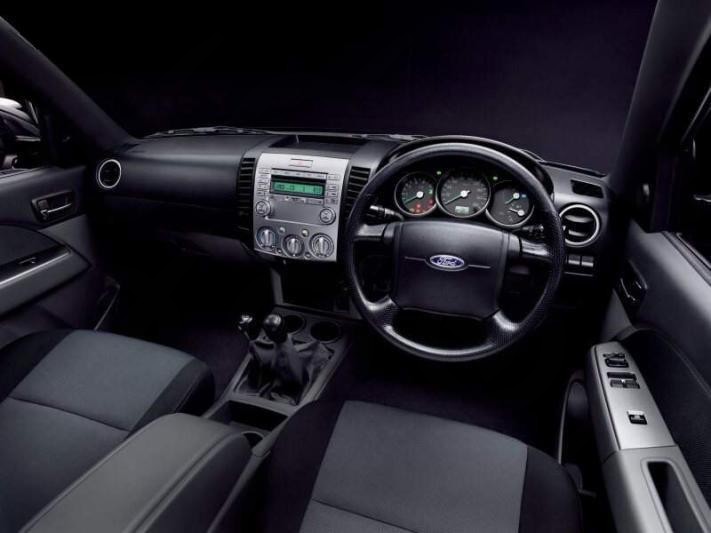
- Responsive and frugal 3.0-litre turbo-diesel engines
- Manual transmission works well
- Impressive braked towing capacity
- For super cab, useful in-cabin storage
- Quiet, well-insulated cabin
- Good ergonomics
- Suspension lacks compliance
- Vague steering
- For dual cabs, limited rear seat legroom
- Large turning circle for 4×4 models
Review: Ford PJ Ranger utility (2007-09)
Overview
Released in March 2007, the Ford PJ Ranger utility was available in single cab, Super Cab and Crew cab bodies and with rear or four-wheel drive. The single cab bodies were solely available with a 2.5-litre common-rail, direct-injection turbo-diesel engine, while the Super and Crew cabs had a more powerful 3.0-litre engine.
The PJ Ranger had an overlapped, cross-braced ladder frame with fully independent double wishbone front suspension and dual rate semi-elliptic leaf spring rear suspension. The rear-wheel drive models were also available as High Rider variants which had increased ground clearance. The four-wheel drive models had a ‘shift on the fly’ function and electronic remote front wheel hub locks. The High Rider and four-wheel drive models were also fitted with a limited slip rear differential.
| Cab | Engine | Drive | Variant | Trans. | Peak power | Peak torque |
|---|---|---|---|---|---|---|
| Single cab | 2.5-litre turbo-diesel I4 | RWD | XL | 5sp man. | 105 kW at 3500 rpm | 330 Nm at 1800 rpm |
| Super (extended) cab | 3.0-litre turbo-diesel I4 | RWD | XL, XL High Rider |
5sp man. | 115 kW at 3200 rpm | 380 Nm at 1800 rpm |
| 4WD | XL | 5sp man. | ||||
| XLT | 5sp auto, 5sp man. |
|||||
| Crew (dual) cab | 3.0-litre turbo-diesel I4 | RWD | XL, XL High Rider |
5sp auto, 5sp man. |
115 kW at 3200 rpm | 380 Nm at 1800 rpm |
| 4WD | XL, XLT |
5sp auto, 5sp man |
Safety equipment
Standard safety equipment included dual front airbags, while all models other than the single cab XL variant – which had bench seats – were also fitted with front seatbelt pretensioners and load limiters. A load-sensing proportioning brake valve – used to control rear braking pressure for improved braking effectiveness under varied load conditions – was also fitted as standard.
Ranger XLT variants were further equipped with front side airbags (from the second quarter of 2007), ABS and electronic brake force distribution.
ANCAP crash testing
In ANCAP crash testing , the closely-related 2008 Mazda BT-50 4WD dual cab utility – fitted with a 2.5-litre turbo-diesel engine – received a three star adult occupant protection rating with a score of 22.46. Due to its substantial similarities, this score was also applied to the equivalent Ranger model. In the offset crash test, the integrity of the passenger compartment was compromised; protection from serious leg injury was poor for the driver, while chest and upper leg protection was marginal for the driver. A default score was awarded in the side impact test.
Features
Standard features for the Ranger XL included 15-inch steel wheels, a two speaker radio with single-disc CD player and MP3-compatibility, air conditioning, a tilt adjustable steering wheel and 12 volt power outlet. The single cab XL variant had a vinyl floor covering, though all other models had cloth floor covering.
From November 2007, the XL Ranger was fitted with power windows and mirrors, remote central locking and an immobiliser.
Compared to the XL, the Ranger XLT was further equipped with 16-inch alloy wheels, a six speaker sound system with a six-disc CD player, ‘Sport Weave’ seat trim, front fog lights, leather-wrapped steering wheel and gear knobs, remote central locking, power windows and mirrors, a 12 volt power outlet in the bedliner, side steps, an alarm and immobiliser. Visually, the XLT could be identified by its chrome grille, stainless steel rear step bumper, chrome door mirrors and handles and sports bar with high-mounted stop light.
Related links
